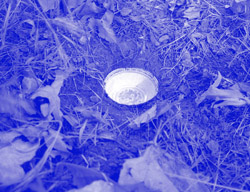

 Arthur Ou left Taiwan at the age of eleven, and lived in the United States for over twenty years. When he came back “home,” all his previous interpersonal connections had been severed. How could he build a bridge with memories two decades old, and reflect these memories on the experiences of the current time and place, to define his self-identity? Arthur Ou’s works obscurely reveal his philosophical thoughts regarding time, objects and meaning. If an object of everyday life has been moved from its original place, or even no longer possesses its original function but only retains its exterior form, is it still the original object – even if it is returned to the place where it was first set?
Arthur Ou left Taiwan at the age of eleven, and lived in the United States for over twenty years. When he came back “home,” all his previous interpersonal connections had been severed. How could he build a bridge with memories two decades old, and reflect these memories on the experiences of the current time and place, to define his self-identity? Arthur Ou’s works obscurely reveal his philosophical thoughts regarding time, objects and meaning. If an object of everyday life has been moved from its original place, or even no longer possesses its original function but only retains its exterior form, is it still the original object – even if it is returned to the place where it was first set?
To Preserve, To Elevate, To Cancel is Arthur Ou’s artwork exploring his return to his native soil. In the very center of the exhibition room, he has installed a structure similar in shape to a fireplace. Several ceramic containers have been placed at both of the sides. The scaled-down design of this fireplace is derived from Marcel Breuer, a German architect of the Bauhaus school. The artist has placed a fireplace-shaped object upright within a space, but he has dispensed with the functions that a fireplace ought to have. What remains is only a cabinet of a purely commemorative nature, used to display those ceramic objects. Inside these ceramic containers are several jars intended to hold cremated remains, but here they have become something strictly decorative.
To Preserve, To Elevate, To Cancel can be summed up in the German word “aufheben.” This transitive verb contains a very large number of meanings, such as: lift up, carry, throw away, preserve, cancel out, dissolve or discard. Through three-dimensional objects and photographs, Ou interprets the meaning of a changing scene; it is in fact an expression of multiple meanings. The physical objects in the photograph are merely forms of memory or longing; their souls no longer exist. And serving as a decorative object, its soul no longer exists either. While the artist asks himself, he is also asking us: precisely how should we view this tumultuous age in which meaning is evanescent?